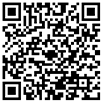
The internet and newspapers, the print kind, haven’t always had the most cordial relationship.
But a recent initiative between Google and The New York Times demonstrates what can happen when they work together.
Google Cloud has teamed up with the Times (https://cloud.withgoogle.com/nytimes/) to help the paper digitize some 150 years of its photo collection, scanning the images in high resolution.
“Once the picture is digitized, everything old is new again,” Jeff Roth, Times’ researcher, and archive caretaker, says in a YouTube video on the process.
The collaboration was launched in November, but I recently noticed Google’s intriguing ad campaign for the conversion festooned on the walls of the Times Square subway station.
The Times’ “morgue” has 6 million to 8 million photos dating back to the 1870s, including prints and contact sheets showing all the images on photographers’ rolls.
The digitization process will involve not only the photo itself but what was written or affixed to the flip side of a photo, which makes things that much more interesting.
Any old newspaper hand could relate to the scribbling in “grease pencil” on the back of an original print, stamped with the various dates the photo had run in the newspaper along with a yellowed headline clipping from the story that the photo ran with. You may even glimpse an occasional old coffee stain.
On the borders of the photo could be crop marks, showing where the picture was re-sized to fit a certain news hole.
The Times’ digital collection also will include photos that never made the paper, or you could say ones that were left on the cutting room floor of history.
“The morgue is a treasure trove of perishable documents that are a priceless chronicle of not just The Times’ history, but of nearly more than a century of global events that have shaped our modern world,” Nick Rockwell, Times chief technology officer, told cloud.google.com.
“Staff members across the photo department and on the business side have been exploring possible avenues for digitizing the morgue’s photos for years,” he said. “But as recently as last year, the idea of a digitized archive still seemed out of reach.”
Ad Age described a 30-second Google spot that shows a picture of Broad Street in New York’s Financial District. The picture seems to be of a Christmas tree, but a narrator points out how Google identified flags flying at half-staff.
“Is this just a photo of a Christmas tree? The Cloud can help us discover more, like flags at half-staff to honor 33rd president Harry S. Truman, who passed away two days before this photo was taken,” the spot says.
Alison Wagonfeld, VP of marketing at Google Cloud, and the Times said the store of photos eventually will be accessible to reporters for news stories. The companies have not said when that will happen.
I contacted the Times, hoping that the photo archive would someday be available to the public, which would be a great feature.
“Currently, the digitized archive will be used internally, only for reporting and research purposes,” Angela He, Times spokesperson, replied.
Using the internet to distribute old photos opens up a world of discovery.
On Facebook, I follow a few groups that feature vintage pictures of New York. These pictures often are posted by private individuals, from someone’s great-grandparent’s collection, for example, and many of them have never been seen outside of a particular family.
They bring to life bygone eras and create a deeper understanding and appreciation of what has gone before us.
Contact the writer at williamhennelly@chinadailyusa.com
 Others
Others
-

Like
(2)















I have something to say